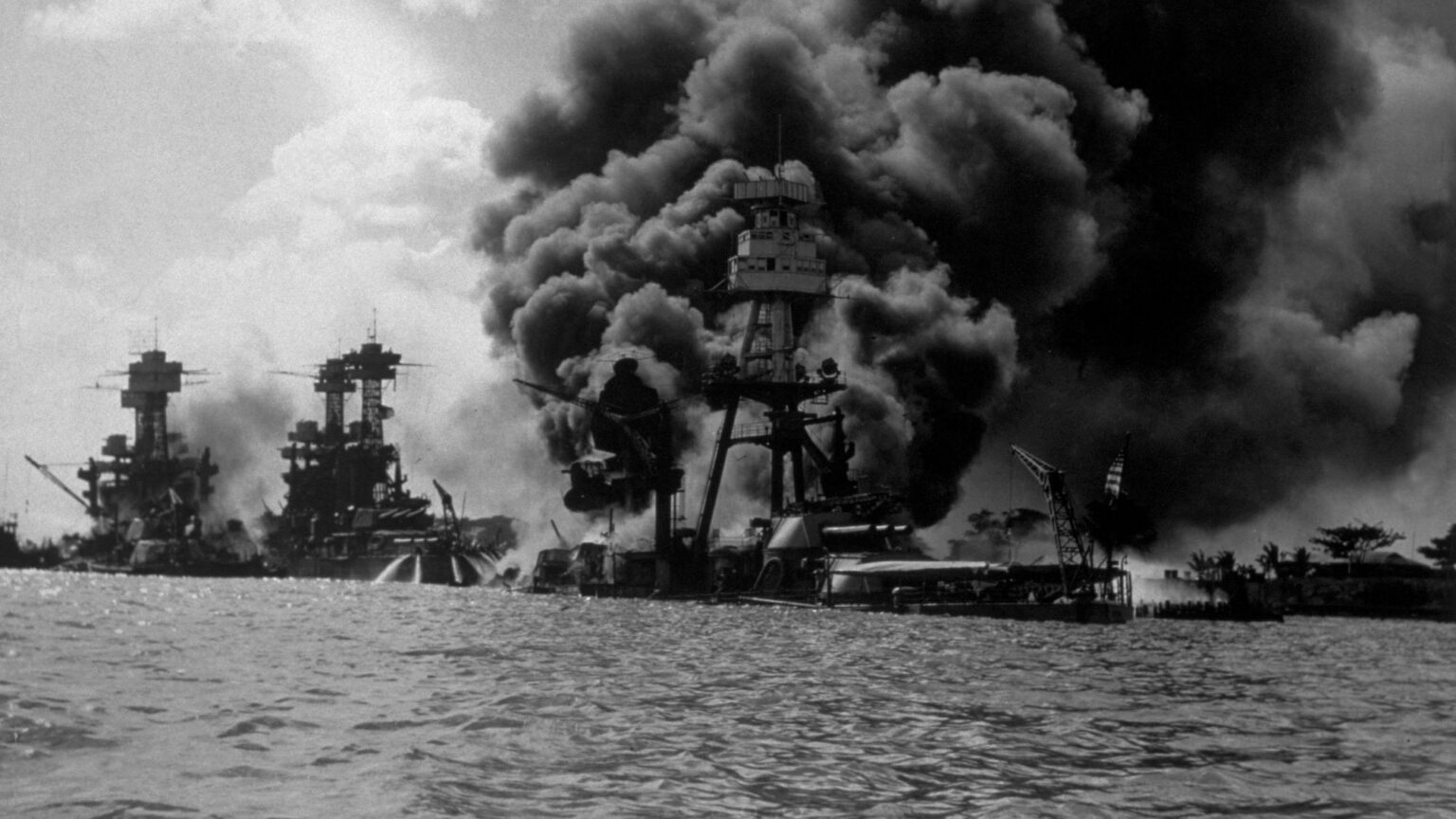
The forgotten history of Pearl Harbor
Why Japan’s attack on the US 80 years ago was not a surprise.
Want to read spiked ad-free? Become a spiked supporter.
In a straight line between the US and Japan, Hawaii is the first piece of land due west of San Francisco. In 1941 its shallow-water port, Pearl Harbor, provided the best place to anchor in the whole Pacific. There, at 7.49am (local time) on 7 December of that year, a first wave of torpedo bombers began to destroy the US Pacific Fleet.
The Second World War revolved around not just Europe and the Atlantic, nor even the Pacific, but the whole of Asia, too. Japan occupied Korea from 1905 to 1945, and in 1931 it used Korean troops when invading Manchuria, a vast territory of China north-east of Beijing. By 1937, in the then capital of China, Nanjing, Japan had killed 300,000 inhabitants in six weeks. By 1939, it had taken over the large island of Hainan, off China. By the next year, it had invaded French Indochina (now Vietnam, Laos and Cambodia).
Fifty minutes before the Pearl Harbor attack, Japanese troops began a bombardment of Kota Bharu, on the north-east coast of Malaya, soon overrunning British and Indian forces gathered there. Within hours, the Japanese entered Thailand, bombed Hong Kong and Singapore and landed troops north and south of Manila, the capital of the Philippines. Within months, Japan possessed all these territories, as well as the Dutch East Indies (now Indonesia) and Burma. It threatened Australasia and India, the top overseas sources of troops for a beleaguered British Empire.
Pearl Harbor, then, was the start of a climax for militarism every bit as devastating as what happened around Europe from 1939. Its impacts still resound in Asia and around the Pacific, where disputes about trade, islands and international waters multiply between China, Vietnam, the Philippines, America and Japan.
Of course, Asia and America have changed a lot in 80 years. In 1941, nuclear weapons had still to be invented. The ability to disable an opponent’s key facilities electronically through cyber-warfare hadn’t even been thought about. Above all, the world economy was not as globalised as it is now: China was a failed state, and racial disgust was a major feature of international relations. But without reading the present into the past, Pearl Harbor has much to teach us.
How sanctions inflame conflict
A long series of US economic sanctions against Japan preceded the raid on Pearl Harbor. The last straw came on 25 July 1941, when US President Franklin D Roosevelt froze Japanese assets in the US. That meant Japan could no longer buy four fifths of its oil from the US, as it had previously done. However, Japan did not need to look far for an alternative source of supply. Indonesia’s total exports of refined oil were 10 times what it sent Japan (1). Altogether, US sanctions could only increase Japan’s designs on the rest of Asia.
We need to remember the relentless logic of sanctions. Framed as ‘economic’, they invariably ratchet up the drive to war.
US sanctions against Japan were only the final instalment of structural animosities that, for the two Empire countries, went back to the late-19th century. Pearl Harbor was part of a longstanding battle for control of the Pacific. There, America first extended its reach by acquiring the island of Midway in 1859, by buying Alaska from Russia in 1867, and by establishing a coaling station in Samoa in 1878. The key period for jockeying for position, however, was the 1890s. The US annexed the islands of Hawaii over 1893-98, conquered Guam in the Spanish-American war of 1898, and – most significantly of all – got Spain to cede the islands of the Philippines in 1899. As the father of US naval strategy, Alfred Thayer Mahan, wrote regarding the Spanish-American war, America was ‘staggered’ by the proposition of ‘Asiatic dominion’ – but only ‘for an instant’ (2).
In 1900, in his ‘Open Door Notes’;, US secretary of state John Hay asked Britain, Japan and Russia, among others, not to expand their established fiefdoms in China. The issue in Asia was China. As the top US journalist Walter Lippmann was to write in 1943, ‘the objective of the Pacific War, and its most probable consequence, is the emergence of China as a new great power in the modern world’.
On the other side of the adversaries at Pearl Harbor, the rise of the steamship had made Japan, which had never been successfully invaded, vulnerable to attack – most likely from Russia – in what had previously been treacherous straits between Japan and Korea. In 1894, however, Japan fought a bloody war with China, giving it control of Korea, Formosa and the Liaotung Peninsula, just west of Korea. Then, temporarily expelled from China by Russia (backed by France and Germany), Japan returned to Liaotung’s Port Arthur and launched a surprise attack on Russia’s fleet there in 1904. The Russo-Japanese war of 1904-05 put paid to Moscow’s ambitions in the Pacific, and, in a world first, had a non-white military power defeat a European one.
With the Treaty of Portsmouth, signed in Maine in September 1905, US president Theodore Roosevelt won the Nobel Peace Prize for arranging the return of Korea and Liaotung to Japan. But this also enabled Russia to retain Vladivostok and its Pacific Coast, and so it could continue breathing down Japan’s neck. Riots broke out in Japan on the Treaty’s signing (5 September 1905). In Tokyo, the American legation was singled out for attack. Radicals launched an assault on the carriage of a top US railroad tycoon, Edward Henry Harriman, in town to do a joint venture with the Japanese to build a rail network in China.
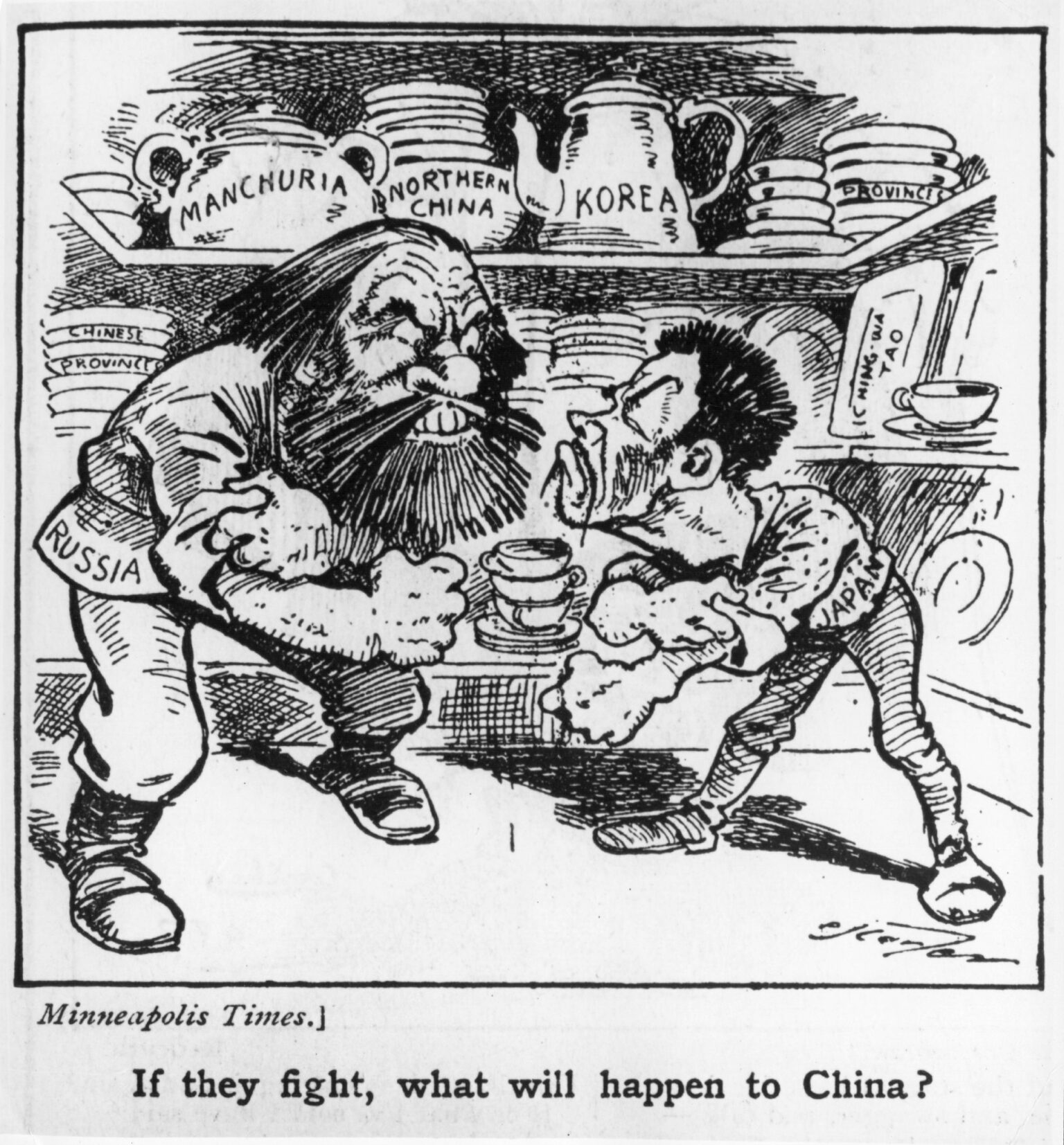
After this, America and Japan did not come to blows until Pearl Harbor – though in China, the fate of US civilians caught up in Japanese war-making was a continual source of friction after the First World War. But even before the First World War, the bulk of the US Navy’s war games revolved around a war with Japan. Meanwhile, in Japan, war with the US became a prominent theme of novels about the future.
In his classic The Road to Pearl Harbor (1950), Herbert Feis recorded in exhaustive detail all the prewar diplomatic manoeuvres between the US and Japan. What the book shows is how no amount of negotiations, attempts to play off different factions in your adversary’s cabinet, international telegrams or embargoes on trade can peacefully settle disputes between fundamentally contending interests.
It is worth recalling this when liberal politicians today call for sanctions. Sanctions by A on B always broaden the scope of potential conflict to third parties. Pride is hurt, national aspirations aroused, distrust exacerbated.
To say that US sanctions started the war that began at Pearl Harbor, however, would be as wrong as to say that Japan started the war in the Pacific. The far-right regime in Japan, in which the power of the army was greater than that of the emperor, was aggressive enough. But the roots of Pearl Harbor had emerged decades before. When Roosevelt famously told Congress that 7 December was a date that would ‘live in infamy’, he also added that Japan had engaged in a ‘surprise offensive extending throughout the Pacific’. But there was little surprising about the outbreak of war.
America had its scale, and Japan its weaknesses. Japan, given its few minerals, was late to industrialise and late to build an empire. In China, the Imperial Army had more and better horses than it had tanks. Japan’s car industry was led by Datsun, whose 1938 sales amounted to fewer than 3,000 vehicles (Honda: 1242; Toyota, 458) (3). Yet, despite the odds and whatever its regime, Japan had little choice but to take war to America.
Admiral Isoroku Yamamoto, commander in chief of Japan’s combined fleet, was the architect of Pearl Harbor. He had trained at Harvard and broadly wanted to avoid war with America. In January 1941, Yamamoto wrote: ‘As I read the results of repeated war games, the Imperial Navy has not once achieved a great victory’ (4). No wonder that when Pearl Harbor happened, Anglo-American leaders felt not just shock, but also relief.
War follows its own course. It can be theorised, but does not always bear rational calculations.
The instability of inter-imperialist alliances
Just as something like Pearl Harbor was pretty much inevitable, so were pre- and post-1941 alliances between different imperial powers unstable.
After the upset around the Treaty of Portsmouth, the US and Japan became relatively friendly, though both began an arms race. Japan sided with Britain and America in the First World War. It signed a number of treaties with the two in the interwar years. By 1931, and throughout the rest of the 1930s, America engaged in twice as much trade and investment with Japan than with China (5).
But all this was to no avail. At the 1919 Versailles conference, Japan was unsuccessful in its efforts to get discrimination formally repudiated in the constitution of the League of Nations. Britain had trained the modern Japanese Navy. Japan had given it supplies in the First World War. But at the Washington Conference of 1921-22, Britain heaped further ridicule on Japan. Along with America, Britain insisted that Japan give back to China its sole wartime gain there: the coastal region of Shandong. And, in a gesture toward ‘disarmament’, Britain got Japan to cut naval tonnage from 70 per cent of the British and American figure (what the Japanese wanted) to 60 per cent (what the Japanese got) (6).
After 1931 and the Japanese invasion of Manchuria, only the US, not the UK, could hope to resist Japan’s plans. So Britain appeased the Japanese longer than it did the Germans. On the other hand, Japan sought a direct alliance with Hitler’s Germany, which was its technological superior. In the two countries’ Anti-Comintern pact of 1936, which was directed against Russia, Japan gained a start.
Those with high hopes were disappointed. Two hours into the morning of 20 August 1939, the German-Soviet Credit Agreement was signed, exchanging German capital goods for Soviet raw materials. Within four hours, Stalin made an air and land attack on Japanese troops on Manchuria’s border with Mongolia, in what was the Soviets’ first fighter / bomber strike. Within four days, and the signing of the Molotov-Ribbentrop Pact, Japan was out in the cold – again.
Earlier in 1939, Japan had suspended trade talks with Germany. Now Germany had helped close off Japan’s military options to the north of its two islands. In what Herbert Feis called a ‘turnabout&’ in German-Japanese relations, ‘there lay almost complete certainty of ultimate war between Japan and the US. For if Japan and Russia came together, the Japanese longing to expand could only turn south’.
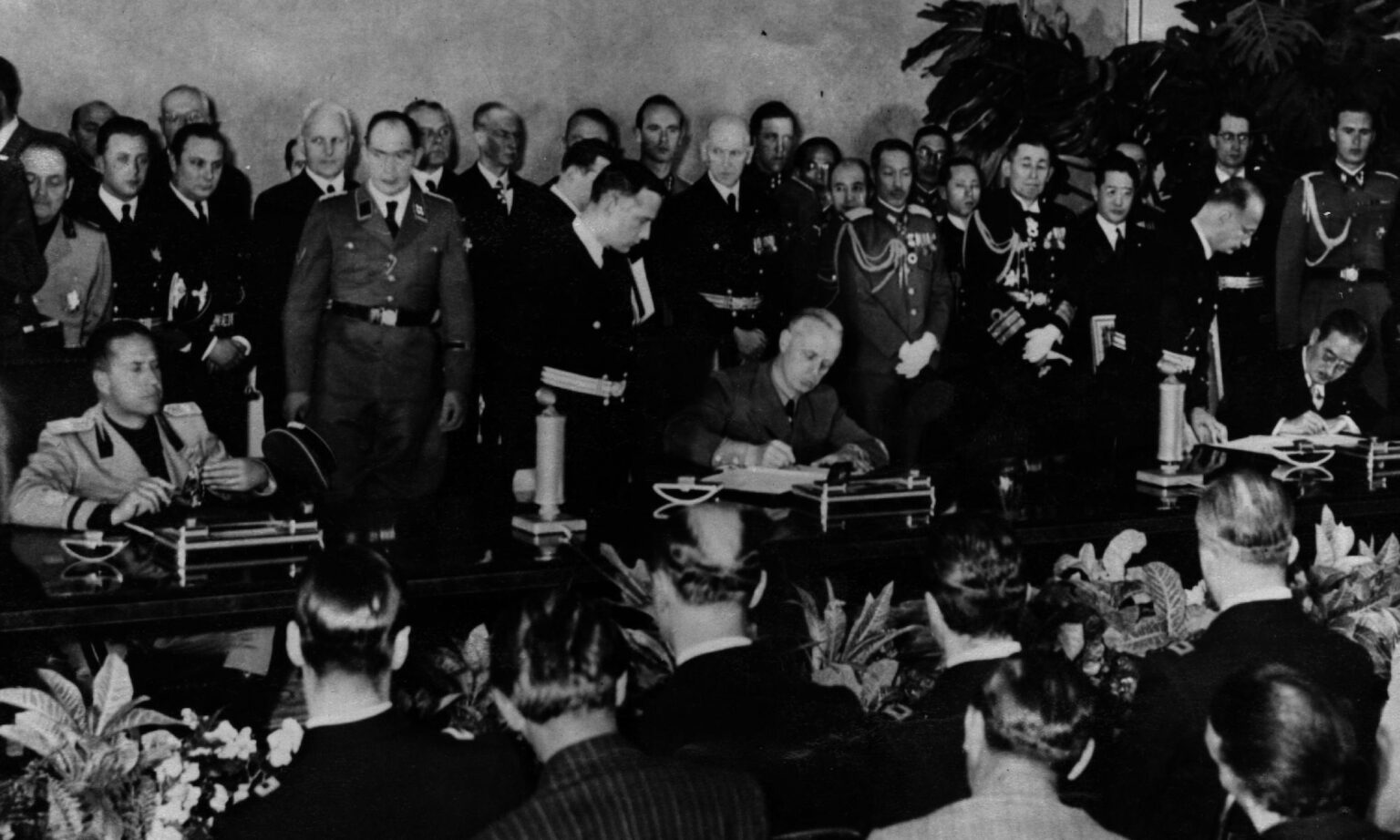
The wartime Axis against the Allies, sealed on 27 September 1940 in the Tripartite Pact between Japan, Germany and Italy, saw few genuine joint initiatives between Japan and Germany. Yet the integration of world economics and politics, so much greater today, was already far enough advanced for events in Europe to be strongly affected by those in Asia. Writing in his diary entry of 9 December, Joseph Goebbels enthused that Pearl Harbor had ‘totally changed the global picture. The US will now scarcely be able to send worthwhile material to England or the Soviet Union: they will need it themselves.’
Pearl Harbor certainly came as a welcome relief to the Nazis, and it was not for nothing that Hitler declared war on America four days after. His troops outside Moscow had met a counter-offensive on 5 December, and, on the same day, Kalinin (now Tver), 160 kilometres northwest of the Soviet capital, became the first European city to be liberated from Nazi rule. Yet there was truth in Goebbels’ belief that Pearl Harbor had made the US look to its own.
The strength of America’s alliance with Britain was one of the subjective factors that helped the Allies win the war. In part, this was reflected in their slogan ‘Germany First’. The great historian Richard Overy notes that, altogether, the US devoted only 15 per cent of its war effort to Japan, and 85 per cent to Germany (7). Yet in mid-1942, he also notes, there were almost 400,000 US soldiers in the Pacific, but just 60,000 ranged against Germany and Italy (8). Technologically advanced, Germany was a bigger threat to the Anglo-American world order than Japan. But Japan was important to America. Indeed, by 1945 and the postwar era, America had used the menace of Japan to end the strength of its ally, Britain, in Asia.
Instability in Asia made everyone intervene there
If we go back to the years before Pearl Harbor, the impunity with which not just Japan, but also America, Britain, France and the Netherlands operated in Asia was impressive – in some ways, much more so than it is today. With Germany’s always-slender writ in Asia diminished by the First World War, all four Western powers – along with Japan – felt that Asia, and particularly China, belonged to them. Even more than Africa, Latin America, the Middle East or Eastern Europe, the unstable, populous nature of Asia made everyone want and need to intervene there. From Russian resistance to the Wehrmacht, through India, Burma, Hiroshima and later Vietnam, it is in Asia that wars – and famines – have taken the greatest toll.
Japan’s occupations of Asia before Pearl Harbor are simply too numerous to go into here. But it is worth recording that when it took Manchuria in 1931, it started making poison gas there – and that it used gas when, a little more than 10 years later, it invaded Burma.
If the fall of Singapore was Britain’s worst capitulation, and emblematic of its prewar appeasement of Japan, Burma was Britain’s longest wartime campaign and its longest retreat ever. Though thousands of British and British Empire troops died there, however, Burma was where Japan’s Imperial Army met its greatest ever defeat. Japan poured 303,500 soldiers in, after first taking Rangoon, and lost 185,000 (9). Even today some in Japan recall Burma as a hell on Earth.
The willingness of the Japanese elite to lose the lives of its subordinates was matched only by its treatment of Asia’s oppressed. The Chinese Communist Party still invokes the rape of Nanjing to defend its military expenditures. Yet even here there is an additional story of Asian subordination to imperialism.
In her harrowing book The Rape of Nanjing, Iris Chang points out that, after the 1949 revolution in China, both China and Taiwan competed for trade with, and political recognition from, Japan. And in the Cold War, America was fully in support of Japan. Thus awareness of a massacre of Chinese that made front-page news in America at the time pretty much vanished for many years, even in China. After China normalised trade with Japan in 1972, it still took until 1982, when the Japanese Ministry of Education revised school history textbooks, for China to make an international issue out of Nanjing (10).
Japan’s commitment to military rule in China brought about the fall of the relatively peaceable Konoye cabinet in October 1941. And when China’s rightist general Chiang Kai-Shek protested putative US concessions to Japan, China became the pretext for Washington drawing still closer to war with Tokyo. Yet if Japanese rule in Asia was abominable, so too was America’s revenge on Japan. And meanwhile, Winston Churchill’s policy on India led millions of Bengalis to die there.
China, India and the other ancient civilisations of Asia had both history and the future on their side. But as its land, its backwardness and its multitudes were overrun by imperialism, Asia – even more so than Europe – became the great canvas for killing.
Racism toward the Japanese outran hatred of the Germans
As the brilliant works by Christopher Thorne in Britain and John Dower in America have shown, both Japan and America, in a truly gruesome style, saw the other’s race as an affront to its rule (11). Indeed, Frank Furedi goes so far as to say that Japan’s challenge to Anglo-American interests in Asia was the most significant factor in internationalising the issue of race, and that – along with the Russian Revolution of 1917 – the Japanese war effort was probably the most ‘significant challenge to the Western-dominated world order’ (12).
Economic antagonisms underpinned Western racism about Japan. Nevertheless, racial feeling had consequences. As much as myopia seemed to affect their eyes, the Japanese were held to have defects of the inner ear, making them poor aviators. Worse, the West underestimated the Japanese in their capacity for innovation.
In the war, indigenous Japanese technologies contributed more to Tokyo’s prowess than imported German ones. But at a meeting of British chiefs of staff on 25 April 1941, the vice-chief of the Air Force turned down a naval request for the despatch of Hurricane fighters to Malaya, saying that obsolete Buffalo fighters would be ‘more than a match’ for Japanese aircraft. Later that year, detailed data on the excellent performance of a Japanese Zero fighter shot down over China were passed to the RAF, only to be ignored (13).
Not to be outdone, America played it both ways in its attitude to Japanese Americans. After Pearl Harbor, the US made 33,000 Japanese Americans serve in the Second World War, more than half of them coming from the continental US. At the same time, it uprooted 110,000 Japanese Americans from their homes, including 70,000 US citizens, and herded them behind barbed wire; to face dust storms, primitive conditions and – for ‘Non-aliens’ – the manufacture of US camouflage (14).
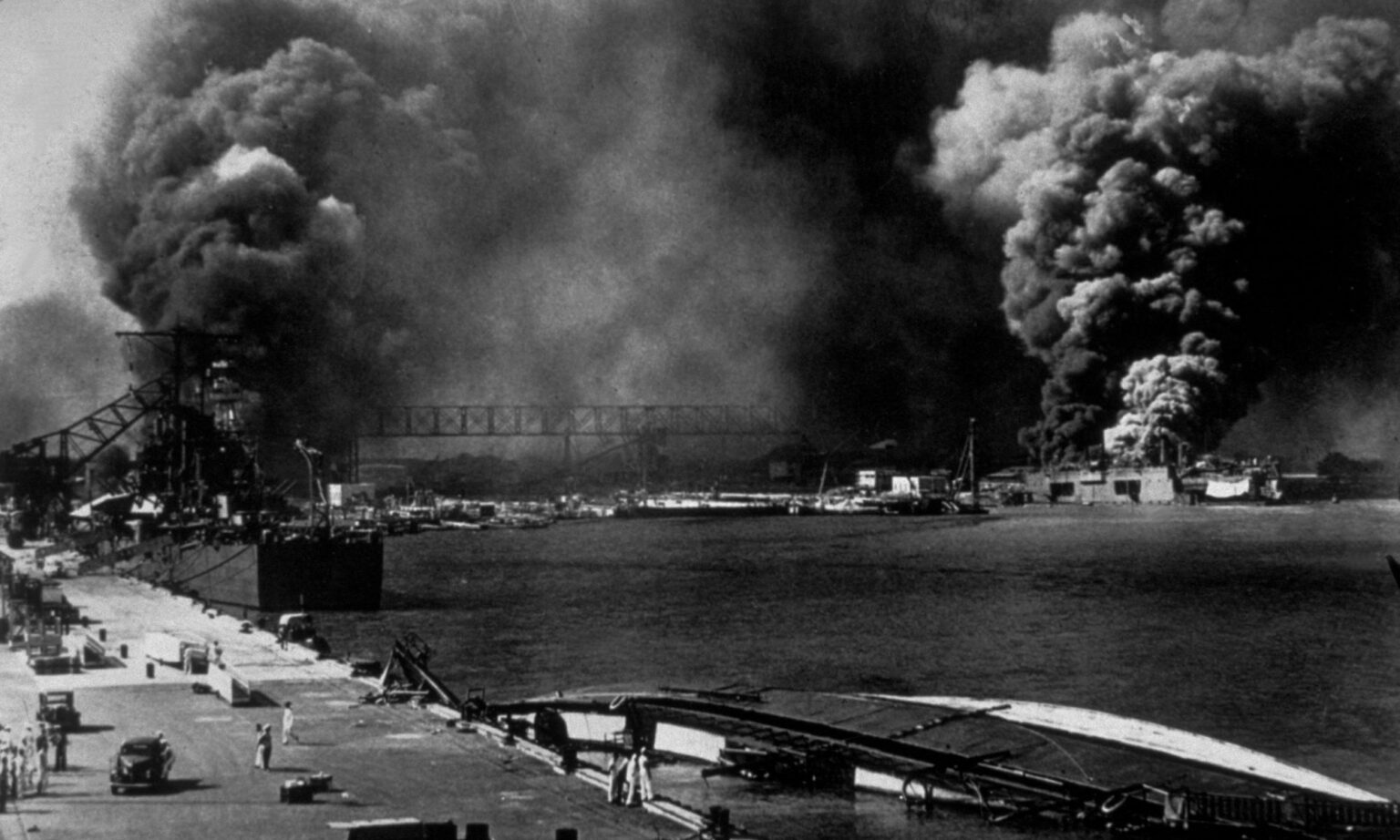
The West hated Hitler, but its feelings of superiority over the Japanese were at quite another level. Since 1933, Japan had led the world in the development of aerial torpedoes. At Hawaii, however, Pacific Fleet admiral Husband E Kimmel believed – despite warnings – that the waters of Pearl Harbor would be too shallow for Japanese technology. He was outwitted: Japan fitted wooden fins to its torpedoes, which allowed them to detonate against American hulls at low depths.
IT-based intelligence is born – and used with great cynicism
Simon Wiesenthal, the famous pursuer of Nazis after the war, has some critics. But on one thing he is almost certainly right. On 3 December 1941, FBI chief J Edgar Hoover told his men to end America’s membership of Interpol, the international police organisation led by SS general Reinhard Heydrich. Four days before Pearl Harbor, and long after joining Interpol in May 1938 just after Hitler’s annexation of Austria, Hoover knew the world was about to change in a big way.
His prescience was not so special. As early as the autumn of 1939, at Bletchley Park, 50 miles north of London, JN-25, the Japanese naval code, had been reconstructed. And since August 1940, the Security Intelligence Section of US Naval Communications, Washington, had at its disposal machine-based decryptions (‘Magic’) of Japan’s diplomatic code (‘Purple’).
In the months before Pearl Harbor, Washington and London knew all about Japan’s plans. But Washington never put the American armed forces in Hawaii in the know. Instead, after the debacle of Pearl Harbor, Washington pilloried Admiral Kimmel and US Army general Walter Short for incompetence.
It is worth noting that imperialist intrigues around intelligence before the attack on Pearl Harbor were genuine, world-shattering conspiracies – unlike those so easily dreamed up by today’s conspiracy theorists. At General MacArthur’s Central Bureau, Melbourne, the US broke the Japanese Navy’s air-to-ground codes in 1942. In April and September 1943, IBM card-sorting machines in Brisbane and Washington broke Japanese marine codes and those used by its military attachés in Europe, so giving the Allies there invaluable information on Nazi economies, arms production and anti-aircraft conduct.
Through IT-based intelligence, the Allies came to know of all the moves toward peace that the Japanese elite planned in 1945. But that did not stop Roosevelt’s successor, Harry Truman, with the endorsement of the British Labour prime minister Clement Attlee, using atomic weapons on Japan. IT-based intelligence was born, but from the start was used with great cynicism.
Conclusion: the historiography of Pearl Harbor
Though British national chauvinism about the Second World War is not what it once was, British popular interest in that war continues unabated. At the same time concern with the role of Japan in the war, like concern with Japan in the contemporary world, has declined.
In the 1980s, Japanese carmakers investing in Britain and America, like Sony’s innovations in consumer electronics, reminded everyone how ambitious Japan had been 40 years before. Japan was castigated for its trade surplus, and its refusal to let in imports and inward investment. In 1992, when Japanese troops made their first ever postwar mission, to Cambodia, the development was front-page news. Then, in 1993, when the Japanese government issued a belated apology for forcing Korean and Chinese women into Imperial Army brothels in the 1930s and 1940s, The Times subjected it to a tart leader (15).
Yet in the decades since, Japan has receded from Western consciousness. Now, China, and Indian inward investors to the UK such as Tata, make more of an impact. Meanwhile, the generation of British soldiers who endured horrific conditions in Japanese PoW camps has mostly died off. In Britain, at least, the harrowing sketches of PoW Ronald Searle, and even the atomic bombing of Japan, are widely forgotten. As British nationalism has ebbed, so the animus toward Japan has also shrivelled.
However, Japan is important. Today it is the third largest economy after the US and China. In 2011, an earthquake, tsunami and nuclear accidents disrupted supply chains all over the world. Japanese innovations – not just in IT, but also in medicine – remain impressive.
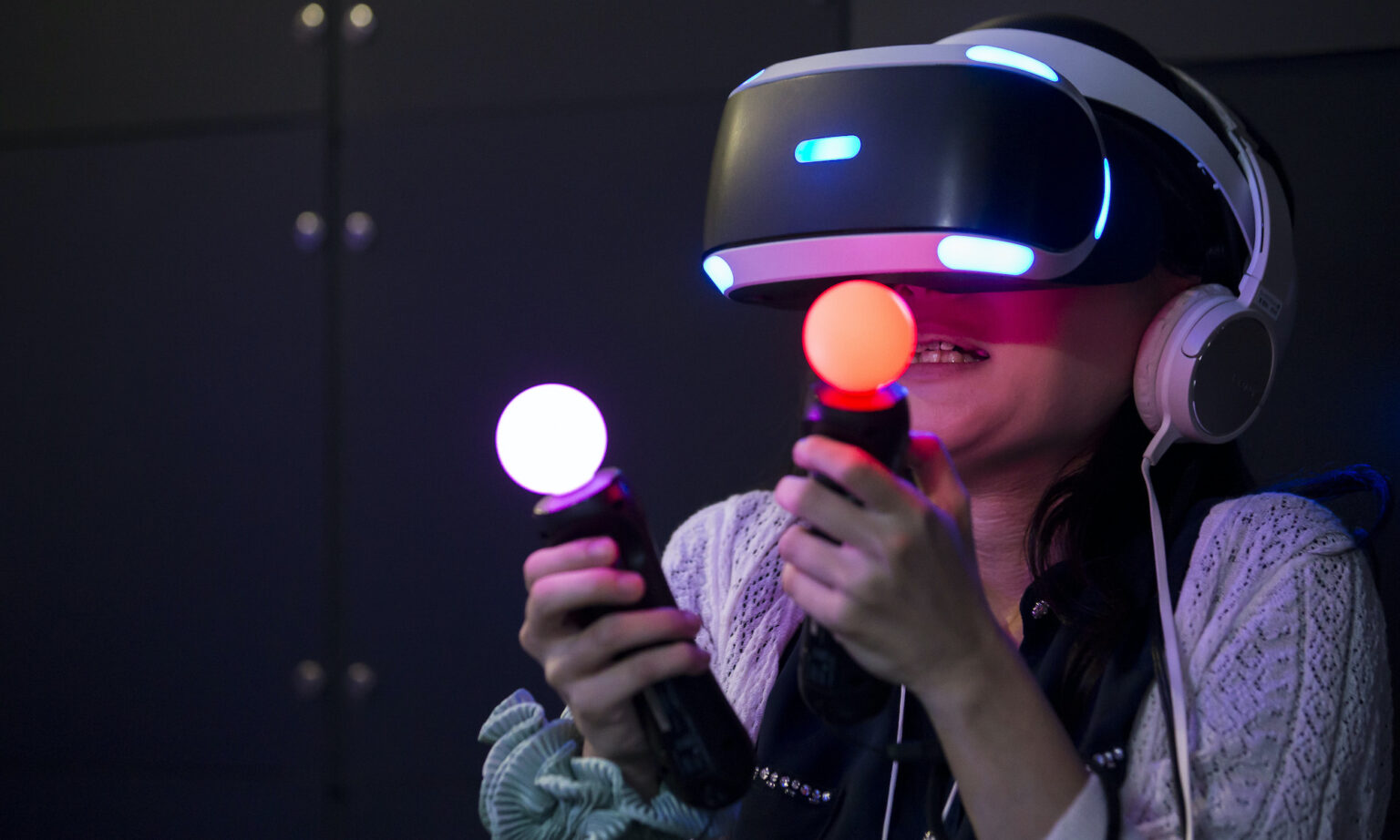
What has been learned, on different sides, in the 80 years since Pearl Harbor? As we have seen in the case of Nanjing, how the war in Asia and the Pacific is interpreted is always a historical product. In the Tokyo War Crimes’ Trial (1946-48), officially known as the International Military Tribunal for the Far East, Japanese military figures were put in the dock. However, with the 1960s and the passing of the wartime generation, revisionist reassessments of Japan were made in the West, just like AJP Taylor and historians in Britain began to question Good vs Evil accounts of Britain vs Germany.
Japan, like Germany, was on the rise. When the Japan Association of International Relations published Taiheiyõ Sensõ e no michi, or The Road to the Pacific War, in 1962-63, its explanation was also that a military had run amok. But this conveniently erased the responsibility that Japanese imperialism as a whole had for the war. On the side of the US, in 1966, the Yale historian James Crowley, while eschewing any condemnation of American policy, ‘tried to show the essential rationality of Japanese foreign policy in the 1930s’ (16).
Over the years, more and more truths have come out about what really happened with the outbreak of war in the East. In 1977, the University of Durham’s Louis Allen, who had been a British intelligence officer all over south-east Asia, drew attention to the role race played in the fall of Singapore. About the British in Malaya, Allen said he wanted to ‘single out racial prejudice as a conspicuous factor in the demoralisation of the native population and many of the Indian troops’ (17). Then, in the booming Japan of the 1980s, historians there felt emboldened enough to talk up the role Britain and America had played in the advent of Pearl Harbor.
Today, with all the growth Asia has enjoyed, American fears are concentrated on China, not Japan. Britain no longer has a bit part to play in Asia, but Japan and Russia are still powers there. China’s relations with foreign states, friendly in Africa and Latin America, are tense in Asia.
Much has changed in the past 80 years. Yet if, for history, Pearl Harbor is a distant shore, the ripples from it are still at our feet. Much has been remembered, but much has been forgotten. All sides have learned too little.
This is an edited version of an essay first published on spiked in 2011.
James Woudhuysen is visiting professor of forecasting and innovation at London South Bank University.
(1) ‘The 1941 De Facto Embargo on Oil to Japan: A Bureaucratic Reflex’, Irvine H Anderson, Jr, Pacific Historical Review, Vol 44, No 2, May 1975, p201, footnotes 1 and 2.
(2) The Problem Of Asia And Its Effect Upon International Policies, Alfred Thayer Mahan, BiblioBazaar, 2009, p8.
(3) Why The Allies Won, Richard Overy, WW Norton, 1996, p221.
(4) ‘Memorandum on Armaments’, Yamamoto, 7 January 1941, quoted in The Final Confrontation: Japan’s Negotiations with the United States 1941, James William Morley (ed), Columbia University Press, WW Norton, 1996, p273.
(5) Main Currents in Modern American History, Gabriel Kolko, Harper & Row, 1976, p216.
(6) International Relations Between the Two World Wars, 1919-1939, EH Carr, pp19-22.
(7) Why The Allies Won, Richard Overy, WW Norton, 1996, p321.
(8) Why The Allies Won, Richard Overy, WW Norton, 1996, p34.
(9) Burma: The Longest War, 1941-45, Louis Allen, Phoenix Press, 2000, p640. Overall, Japan lost 2.3 million people in the Second World War.
(10) ‘Aggression, Victimization, and Chinese Historiography of the Nanjing Massacre’, Mark Eykholt in The Nanjing Massacre in History and Historiography, Joshua A Fogel and Charles Maier (eds), University of California Press, 2000, pp28-30. In his Introduction to this anthology, pp2-4, Fogel contrasts the unwillingness of the postwar People’s Republic to play the victim with the more recent willingness of the Chinese diaspora to seek identity through events like Nanjing.
(11) War Without Mercy: Race and Power in the Pacific War, John Dower, Pantheon Books, 1986; The Issue of War: States, Societies and the Far Eastern Conflict of 1941-1945, Christopher Thorne, Hamish Hamilton, 1985.
(12) The Silent War: Imperialism and the Perception of Race, Frank Furedi, Pluto Press, 1998, p181.
(13) The War Against Japan, Volume 1: The Loss of Singapore, S Woodburn Kirby and others, Naval and Military Press, 2004, p240, footnote 3.
(14) America’s Concentration Camps, Allan R Bosworth, WW Norton & Co, 1967, pp17-18, 145. The title of this book is hyperbolic – unlike Germany and its incineration of Jews, America never built gas ovens for Japanese Americans.
(15) ‘The name of comfort’, The Times, 5 August 1993.
(16) ‘Japan at war: history-writing on the crisis of the 1930s’, Louise Young, in The Origins of the Second World War Reconsidered, second edition, Gordon Martel (ed) p173. See ‘A New Deal for Japan and Asia: One Road to Pearl Harbor’, James B Crowley, in Modern East Asia: Essays in Interpretation, James B. Crowley (ed), Princeton University Press, 1966
(17) Singapore 1941-1942 [1977], Louis Allen, Routledge, 1993, p248.
All pictures by: Getty.
Who funds spiked? You do
We are funded by you. And in this era of cancel culture and advertiser boycotts, we rely on your donations more than ever. Seventy per cent of our revenue comes from our readers’ donations – the vast majority giving just £5 per month. If you make a regular donation – of £5 a month or £50 a year – you can become a and enjoy:
–Ad-free reading
–Exclusive events
–Access to our comments section
It’s the best way to keep spiked going – and growing. Thank you!









Comments
Want to join the conversation?
Only spiked supporters and patrons, who donate regularly to us, can comment on our articles.